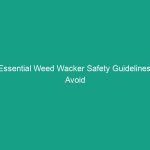Introduction
In today’s fast-paced work environments, the importance of health, safety, and environmental (HSE) regulations cannot be overstated. These Regulations are designed to protect workers, ensure safe working conditions, and minimize environmental impact. Understanding Safety Regulations and Compliance is essential for any organization aiming to foster a safe workplace and adhere to legal Standards. This article will explore the critical aspects of Workplace Safety, including regulatory frameworks, best practices, case studies, and the challenges faced by organizations in maintaining compliance.
Regulatory Frameworks
To grasp the landscape of Workplace Safety, one must first understand the regulatory frameworks that govern it. These frameworks consist of a combination of international, national, and local regulations that set the standards for safe working conditions.
International Regulations
Organizations operating globally must comply with international regulations such as the Occupational Safety and Health Administration (OSHA) standards and the International Organization for Standardization (ISO) standards. osha sets forth mandatory Safety standards in the United States, while ISO provides voluntary guidelines that can elevate a company’s Safety profile.
National Regulations
Each country has its own set of safety regulations that must be adhered to. For example, in the UK, the Health and Safety at Work Act 1974 outlines the responsibilities of employers to ensure the health and safety of their employees. Understanding these regulations is crucial for compliance and avoiding legal repercussions.
Local Regulations
Local regulations can vary significantly and may impose additional requirements beyond national standards. Local health departments often have specific regulations concerning Workplace Safety that must be adhered to in addition to broader laws. Organizations should regularly consult local authorities to ensure compliance with these regulations.
Compliance with Regulations
Compliance with safety regulations is not merely a legal obligation; it is a moral responsibility. Companies must implement comprehensive safety programs that include Training, regular audits, and reporting protocols to ensure adherence to these regulations. Failure to comply can result in severe penalties, including fines, lawsuits, and damage to reputation.
Best Practices for Safety Regulations and Compliance
Implementing Best Practices is vital for ensuring compliance with safety regulations and creating a safe working Environment. Here are several effective strategies that organizations can adopt:
1. Regular Training and Education
Conducting regular training sessions is essential to keep employees informed about safety regulations and Procedures. Training should cover the importance of safety regulations, emergency procedures, and how to identify potential Hazards. Engaging employees in these sessions can foster a culture of safety within the organization.
2. Conducting Safety Audits
Regular safety audits are crucial for identifying compliance gaps and areas for improvement. These audits should evaluate the effectiveness of current safety protocols and identify potential Hazards. By addressing these issues proactively, organizations can mitigate risks before they lead to accidents.
3. Implementing a Safety Management System (SMS)
A Safety Management System (SMS) is a systematic approach to managing safety risks. It involves establishing safety policies, setting objectives, and implementing procedures to achieve those objectives. An SMS can help organizations ensure ongoing compliance with safety regulations while continuously improving safety performance.
4. Encouraging Employee Involvement
Engaging employees in safety initiatives can lead to a more proactive safety culture. Employees should be encouraged to report hazards, participate in safety committees, and contribute to safety training. This involvement not only improves compliance but also enhances employee morale and satisfaction.
5. Utilizing Technology
Technology can play a significant role in enhancing safety compliance. Tools such as safety management software, incident reporting apps, and wearable safety devices can streamline compliance processes and improve data collection. Leveraging technology can lead to more efficient safety practices and better regulatory adherence.
Case Studies of Successful Compliance
Analyzing successful case studies can provide valuable insights into how organizations have effectively implemented safety regulations and compliance guidelines. Here are a few notable examples:
Case Study 1: Manufacturing Industry
A major manufacturing company implemented a comprehensive safety management system that included regular training, audits, and employee engagement initiatives. As a result, the organization reduced its workplace accident rate by 40% over three years. The company credited its success to a strong emphasis on compliance with OSHA regulations and regular communication with employees regarding safety practices.
Case Study 2: Construction Sector
In the construction industry, another company adopted an innovative approach by integrating wearable technology into its safety protocols. Workers were equipped with smart helmets that monitored environmental conditions and provided real-time alerts about potential hazards. This proactive approach led to a significant decrease in accidents and improved compliance with safety regulations.
Case Study 3: Healthcare Facilities
A healthcare facility implemented a robust infection control program in response to stringent regulations from health authorities. By training staff and adopting Best Practices for hygiene and safety, the facility achieved compliance with all relevant health and safety regulations, resulting in a safer environment for both employees and patients.
Challenges in Maintaining Compliance
Despite the best efforts, organizations often face challenges in maintaining compliance with safety regulations. Understanding these challenges can help businesses develop strategies to overcome them.
1. Lack of Awareness
One of the primary challenges is the lack of awareness among employees regarding safety regulations and compliance requirements. Many workers may not fully understand their rights and responsibilities under the law, which can lead to non-compliance. Organizations must prioritize education and training to address this issue.
2. Rapidly Changing Regulations
Safety regulations are continually evolving, and organizations must stay updated to maintain compliance. The challenge lies in understanding and implementing these changes in a timely manner. Regular reviews of regulatory updates and adjustments to safety protocols are essential to stay compliant.
3. Resource Constraints
Many organizations, especially small businesses, may struggle with limited resources dedicated to safety compliance. This can hinder their ability to implement comprehensive safety programs. Allocating sufficient resources and prioritizing safety in the organizational culture is crucial for overcoming this challenge.
4. Resistance to Change
Resistance to change can pose a significant barrier to implementing safety regulations and compliance guidelines. Employees accustomed to certain practices may be hesitant to adopt new protocols. Leadership must actively engage employees in the change process and communicate the Benefits of compliance for overall Workplace Safety.
Future Trends in Safety Regulations and Compliance
The landscape of safety regulations and compliance is continually evolving. Staying informed about future trends can help organizations proactively adapt to changes. Here are some emerging trends to watch for:
1. Increased Use of Technology
The integration of technology in safety practices is expected to grow. Innovations such as artificial intelligence (AI), machine learning, and data analytics will enhance risk assessments and incident reporting. Organizations that embrace these technologies will likely find it easier to maintain compliance and improve safety outcomes.
2. Focus on Mental Health
As awareness of mental health issues in the workplace increases, future regulations may place more emphasis on mental well-being. Organizations will need to implement programs that support mental health alongside physical safety, creating a more holistic approach to Workplace Safety.
3. Remote Work Safety Regulations
The rise of remote work has prompted discussions around new safety regulations tailored to home office environments. Organizations will need to develop guidelines that address ergonomic safety, Cybersecurity, and mental health in remote work settings, ensuring compliance even outside traditional workplaces.
4. Sustainability and Environmental Compliance
As organizations become more environmentally conscious, regulations related to Sustainability are expected to gain prominence. Companies will need to ensure compliance not only with safety regulations but also with environmental policies, balancing both aspects for a sustainable future.
Conclusion
Understanding and implementing Safety Regulations and Compliance is not just a legal requirement; it is an essential component of fostering a safe and productive workplace. By familiarizing yourself with regulatory frameworks, adopting best practices, learning from case studies, addressing challenges, and staying abreast of future trends, organizations can create a culture of safety that benefits everyone. It is crucial for businesses to prioritize HSE initiatives and actively engage employees in safety practices. Remember, a safe workplace is a productive workplace. Take action today to review and enhance your safety protocols!


